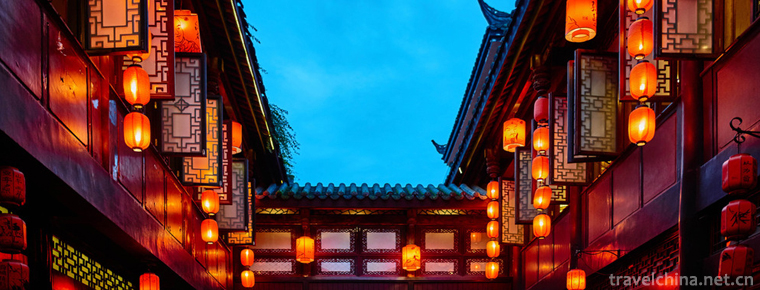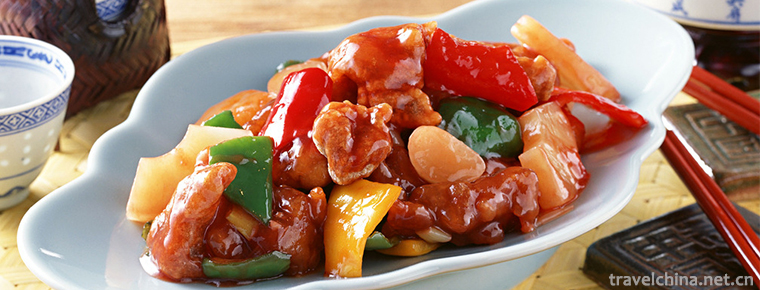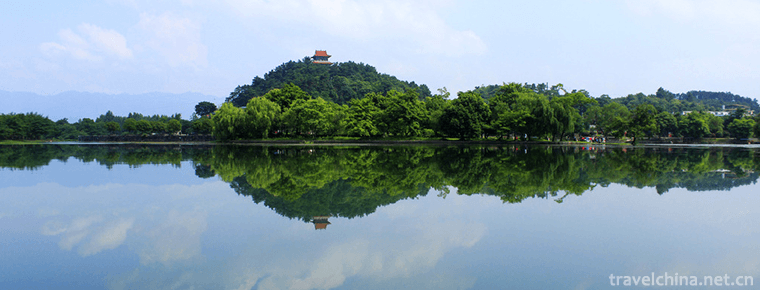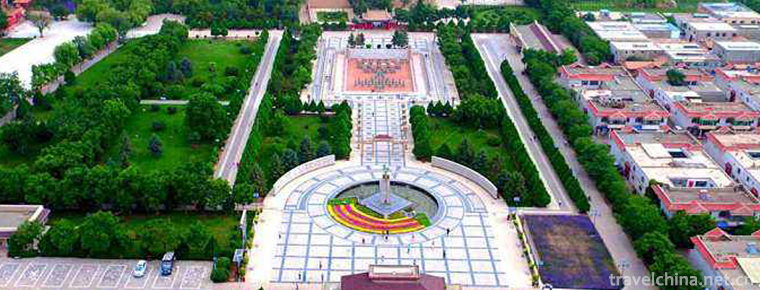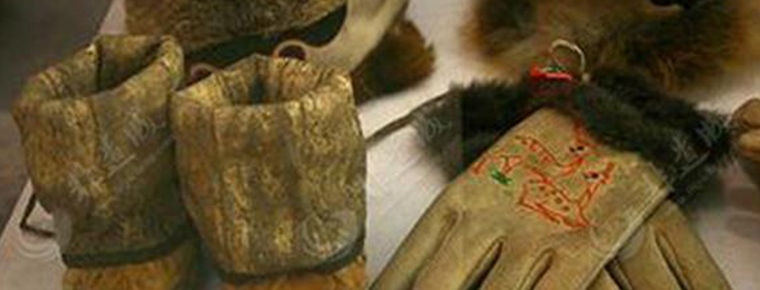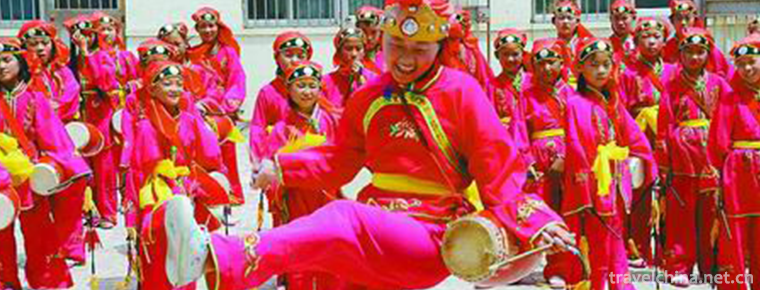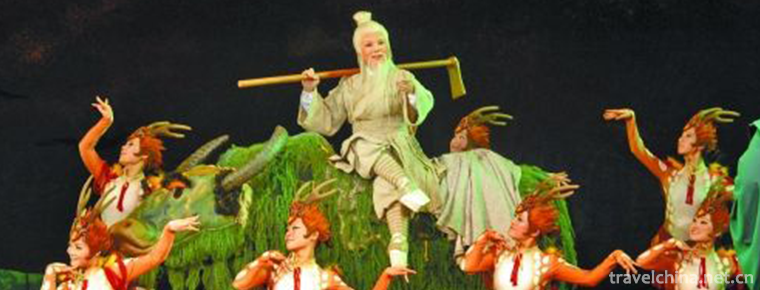Wenzhou Drum Ci
Wenzhou Drum Ci
Wenzhou Drum Ci, also known as "Quci" or "Blind Ci", commonly known as "Singing Ci", is the largest type of opera in southern Zhejiang Province, and also one of the main types of music in East China and Zhejiang Province.
Wenzhou Drum Ci is good at lyric, narrative, easy to understand, rich in content; rhyme, syllable harmony, maintaining the characteristics of folk rap music. The most representative traditional repertoires are "Chen Shiniangniang", "Twelve Red" and so on.
Wenzhou Drum Ci originated in Ruian, Wenzhou and spread in Wenzhou, Qingtian, Yuhuan and other areas. On May 20, 2006, "Wenzhou Drum Ci" declared by Ruian City, Zhejiang Province, was approved by the State Council to be included in the first batch of national intangible cultural heritage catalogue, project number V-13.
Historical Evolution
Origin and Background
The origin of Wenzhou drum ci, the drum CI artists spread about "grandfather". Artists say that the "grandfather" of Wenzhou Drum Ci is the uncle of Tang Ming Emperor. He is smart, good at writing and poetry, and knows the rhythm. Later, because of illness and blindness, they taught the blind to sing drum lyrics for their own amusement, so there were drum lyrics among the people.
All those who hold the origin of the Southern Song Dynasty quote this poem as their basis. This is Lu You, a poet of the Southern Song Dynasty, who wrote "Xiao Zhou You Near the Cottage and Boat Step Back": "Ancient Liu Zhao Jiazhuang in Xieyang, a blind man with a negative drum is playing the field. Who cares before he dies, all the villages listen to Cai Zhonglang." The poem describes the performance of drum ci, but where Zhao Jiazhuang is mentioned in the poem is still unknown and has become a lone witness. Moreover, some people believe that the poems are not about Wenzhou drum ci, but about the drum CI which goes south in the north or Taozhen which is popular in eastern Zhejiang. Nevertheless, the possibility that Wenzhou Drum Ci originated from the Southern Song Dynasty still exists.
According to Ji Songpo, an old man, Wenzhou Drum Ci began in the Ming Dynasty and was formed by the combination of Lixiang Opera and Ci-qu Opera in Hengyang (Pingyang Kunyang). After that, Wenzhou Drum Ci underwent the clothing of ancient music and gradually developed by absorbing folk tunes. According to the commentary of "Drum Ci" in the Encyclopedia of China, Opera and Art Volume, "Wenzhou Drum Ci in Zhejiang Province, which originated from the Ming Dynasty, originated from the songs of"singing Taiping","Lingjing"and"Niangniang Ci"sung during the worship of gods. The melody was developed from ancient Ci and melody and local folk minor tunes. Unfortunately, this statement is only based on inference and lacks of historical data.
Development
Wenzhou Drum Ci has historical data for the Qing Jiaqing Dynasty. According to Laiyu written by Zhao Gou, a Ryan scholar at that time, "Jiaqing, Daoguang, Baimensong's best lyrics are hanging lanterns and hanging colors everywhere for a while." The book was written in 1806 and refers to Baimensong, a lyricist named Asong in Baimen Township of Ruian. Thus, Wenzhou Drum Ci was quite popular in 1806. Moreover, Xiang Song, a Ruian squire in Guangxu period of Qing Dynasty, also recorded in his collection of Wudi: "Baimen Songgong's lyrics are from far and near, and the name comes from his native people or more." The popularity of drum CI artists is higher than that of the famous people in their hometown, which can be beautiful with modern entertainment stars. According to the originators of the late Ming and early Qing Dynasties, any kind of art has a long development process, even hundreds of years, from its formation to maturity. From the point of view that Wenzhou Drum Ci was flourishing in 1806, the origin of this art dates back to about the eighteenth century.
By the end of the Qing Dynasty and the beginning of the Republic of China, according to the dictation of Lin Yanxian, an old Mr. Ruian (a student of Dongshan De), in the period of Dongshan De, Chen Changpai, Peng Qingyuan and other active music circles, their Niujin Qin had only seven strings and was played vertically by the side of a square stool. According to the five-tone scale of Guqin, "Gong Shang Jiao Weiyu" to distinguish, and then by Guan Huashan, Zheng Xingjin and other artists to develop into seven-tone scale, only in line with the world music score. During the period of the Republic of China, the development of Wenzhou Drum Ci almost stagnated. In the 1920s, there were two factions, the South and the north, which were popular in Pingyang and Ruian, and the North was popular in Wenzhou and Yongjia. After liberation, Wenzhou Drum Ci absorbed opera music such as Peking Opera, Yueju Opera, Bangzi Opera and Huangmei Opera, and applied opera brand music to varying degrees, resulting in Ruan (Shichi), Ding (Lingsheng) and Chen (Zhixiong) three major schools.
Artistic Characteristics
Performing Characteristics
Wenzhou drum CI can be divided into two kinds according to the way of performance: one is called "Pingci", which refers to the drum Ci of singing historical biographies, love stories and martial arts novels. Every red-and-white wedding event, or entertainment of guests, or because of disputes to recognize the wrong penalty words, melody elegant, Lyric expression, pleasant to the eye; there is also a "big word", also known as "Sutra Ci", also known as "Niangniang Ci", are sung in the temple, its form is quite similar to a ritual. When singing big lyrics, one beat with a drum, beat big drums, beat big gongs, high-pitched, rough tunes, relatively primitive, can sing for several days and nights.
The performance form of Wenzhou drum lyrics is mainly singing by one person, which is called single file. When singing, the artist placed a flat drum in front of the right, under which the canthus foot was tied with a hug of the moon (Bang), the front mantle, and the bull-tendon Qin in the middle. After the founding of New China, some artists hung gongs or hairpins on their right front stools and feet to increase the performance atmosphere. During the performance, the artist sits on the chair, pats with his left hand, and holds the drum stick (bamboo stick) with his right hand, playing the piano, drum, bang and gong. Wenzhou Drum Ci has its distinct rap and singing characteristics. It relies entirely on the "tongue strength" of proper speed and order, requiring performers to mix life, dan, clean, final and ugly together, so as to make clear the plot, vivid expression, emphasis on restraint, pause and frustration, supplemented by actions and gestures, thus illusion on the mouth. A variety of personality images, create a variety of complex atmosphere.
Singing tune
The tune of Wenzhou drum lyrics has been developed through constant reference and innovation. The original drum melody is flat and monotonous, which is basically the structure of the upper and lower sentences. Later, by absorbing folk music such as minor tunes and Tiange, drawing lessons from opera music such as Beijing Opera, Yueju Opera, Ouju Opera, Gaoqiang Opera, Bangzi Opera, Huangmei Opera, and applying opera brand music to varying degrees, artists formed their own different singing and artistic schools, enriched and developed drum lyrics. Like traditional opera, drum lyrics have different priorities. It can be roughly summed up as "original board", "slow board", "fast board", "tight board", "pan board", "inverted board", "clean board", "scattered board", "number board" and so on.
The commonly used tunes of Wenzhou Drum Ci include "Taiping Tune", "Yin Tune" and "Major Tune". "Taiping tune" is the basic melody of drum ci, also known as "Taiping singing". There are two kinds of "Zhengtaiping" and "Anti-Taiping" tones, namely, the levy mode and the palace mode. "Yin Tune" is also known as "Tian Song" with free rhythm. It is widely used in drum lyrics and singing tunes, and most people in the countryside sing it. There are "Acacia Tune", "Praise Tune", "Poetry and Fu Tune" and so on. "Major" is also called "Lingjing Major" or "Niangniang Cidou", which belongs to the mode of levy.
Major instruments
The main instruments of drum lyrics are big drums, big gongs, flat drums, cow tendons, three-grain boards, small Huo yue, etc.
musical structure
Wenzhou drum CI music is a kind of plate-style change music, which has nine basic patterns. The commonly used tunes are positive and anti-Taiping tunes. Its form of music belongs to the form of single-track structure. Often on the basis of a piece of music, folk tunes, ballads and other opera music are absorbed, and various variations are produced by the use of the change of plate type.
Art School
Wenzhou Drum Ci is mainly divided into Ruan (Shichi), Ding (Lingsheng) and Chen (Zhixiong). Ruan Pai is good at absorbing folk sayings and other artistic categories. It has accurate pronunciation, clear pronunciation, popular Tao Bai and graceful singing. It is good at portraying ladies, family jade and rural aunts. Its artistic style is delicate and beautiful. Its representative repertoires are Wenwu Xiangqiu and Shimei Tu. Ding Pai performed solemnly, with gentle singing voice, natural Tao Bai, accurate drums, good at singing heroes, solemn and solid artistic style, the representative repertoire is "Tianbao Tu", "Boxing Zhenxi" and so on. Chen's voice is high and clear, the timbre is sweet and mellow, the singing tone is rigid and soft, the music is plasticity, can adapt to different types of character stories, singing, artistic style is magnificent and magnificent, the representative repertoire is "three dozen white bone elite", "Liang Shanbo and Zhu Yingtai" and so on.
Epidemic areas
The popular area of Wenzhou Guci is mainly in Wenzhou. However, Wenzhou drum lyrics have also been popular in parts of Qingtian County near Wenzhou, Lishui City, Chumen and Kanmen in Yuhuan County, Nancheng City in Shanghai and Shexian County in Anhui Province.
Inheritance and Protection
Current situation of circulation
With the change of people's material consumption mode and survival concept, Wenzhou Drum Ci also encounters some problems of survival and development. First of all, there are limited venues for drum lyrics. Secondly, it is difficult to absorb talents. At present, there are not many people who study traditional folk art in economically developed areas. Finally, the phenomenon of artists pursuing economic interests is prominent. In the past ten years, most Wenzhou drum CI artists sang "Chen Shiniangniang" in Chen Shishimiao, and there were few remaining modern and traditional words. How to inherit them has become a difficult problem. (This content was published by Guo Fengzhi, Wu Xiangyi and Lu Yuan in 2013)
Art Inheritance
With the gradual withdrawal of drums from the stage of history, with the innovation of new technology, entertainment as the main expression of new media technology has become increasingly popular in people's daily life. The combination of ancient drums performance and modern media technology, relying on new audio-visual technology to achieve digital communication, audio-visual drums began to become popular. 。 Audio-visual drum lyrics have become an important form of transmission of Wenzhou drum lyrics by virtue of the powerful dissemination power of modern media technology.
Selected as a non-survivor
On May 20, 2006, "Wenzhou Drum Ci" declared by Ruian City of Zhejiang Province was listed in the first batch of national intangible cultural heritage list with the approval of the State Council.
representative figure
Ruan Shichi, born in October 1929 (January 1928), is a native of Anyang Town, Ruian City, Zhejiang Province. Ruan Shichi is a representative figure of the second generation of Wenzhou Drum Ci and the founder of the art of "Ruan School" of Wenzhou Drum Ci. Tao Shanhua (Wang Qifan), a 12-year-old Wenzhou drum nomenclature designer in Taoshan, Bairui'an, was a teacher, followed by Mr. Chen Baosheng and Mr. Chen Anu. He was 17 years old and famous for "Twelve Red" and "Five Wind Maps" in southern Zhejiang. Its singing language is easy to understand, articulation is clear, expression is vivid, singing is graceful and gentle, emotional delicate, sandalwood long body language, to depict the country show, small family Jasper and rural aunts are good at, forming a "Ruan school" singing the slender and beautiful unique style. In February 2008, Ruan Shichi was selected as the representative successor of the second batch of national intangible cultural heritage projects.
Fang Keduo was born in Pingyang County, Zhejiang Province in 1942. In 1955, Fang Keduo studied Wenzhou Drum Ci Performance from Mr. Su Fangzu. He was also taught by Mr. Yang Dalun, a musician from Pingyang County. At the same time, he inherited the Wenzhou Drum Ci performance skills of Mr. Chen Changpai and Mr. Su Fangzu. Fang Keduo drew on the strengths of various schools to form a unique artistic feature of "lyrics". Among them, there are Peking Opera tone, clear pronunciation, melodious and fluent singing tone, rich voice, like opera and non-opera, long-term expression, smooth mouth, unique style and charm. The representative works include the traditional repertoire "Three invitations to Fan Li Hua", the modern repertoire "Red Lantern" and "Shajiabang". In February 2008, Fang Keduo was selected as the representative successor of the second batch of national intangible cultural heritage projects.
Chen Zhixiong, born in January 1937 in Wenzhou, Zhejiang Province. In 1949, Mr. Chen Yuebo, a teacher, performed on the stage in 1951. Chen Zhixiong's Wenzhou drum lyrics are good at lyrics, narrative, rhyme, popular and easy to understand, with rich vocabulary and folk proverbs, natural rhythm, syllable harmony, maintaining the characteristics of folk rap and singing music, is one of the four greatest masters of Wenzhou drum lyrics. His representative works include "Eight Immortals Congratulations", "Luo Tong Marriage", "Kong Ming ordering soldiers", "Cutting off the cat" and "Ji Gong Zhuan". Chen Zhixiong has trained more than 200 students of Chen Style Drum Ci in the past 60 years. In December 2012, Chen Zhixiong was selected as the representative successor of the fourth batch of national intangible cultural heritage projects.
The Value of Quyi
Wenzhou Drum Ci is the product of Ouyue culture and thrives under the long-term nurturing of Ouyue culture. In turn, it also influences and promotes the continuous development of Ouyue culture. It is an indispensable part of Ouyue culture.
The essence of traditional culture advocated by Wenzhou Drum Ci, such as loyalty to the country, freedom from violence, charity, loyalty, filial piety and shame, plays a direct and effective role in educating clothes merchants and gentry living in Jinglu alley of Wenzhou City and farmers and village nuns farming in the countryside.


-
Jinli Street
Address:No. 231, Wuhou Temple street, Chengdu, Sichuan,China.
Views: 132 Time 2018-09-29 -
Tiananmen Square
East Chang'an Avenue, Dongcheng District, Beijing, China.
Views: 316 Time 2018-10-02 -
Pineapple Sweet and Sour Pork
Gu Lu meat, also known as the ancient meat. It is a special dish in Guangdong. This dish dates back to the Qing Dynasty. At that time, many foreigners in the city of Guangzhou .
Views: 147 Time 2018-11-02 -
Linqu canal
Lingqu, formerly known as the Qin Digging Canal, Zero Canal, Douhe Canal, Xing'an Canal and Xianggui Canal, is a great project created by the working people of ancient China.
Views: 328 Time 2019-01-30 -
Lushan Karst Cave Group Scenic Area
Yiyuan Karst Cave Group is located in Nanlushan Town, 7 kilometers northwest of Yiyuan County. It has been proved that there are more than 100 caves in the area of 5 square kilometers around the ape-m.
Views: 164 Time 2019-02-06 -
Leitaihan Culture Museum Wuwei
Leitaihan Culture Museum is located in the urban area of Wuwei City. It is the land of the Chinese tourism symbol "Ma Ta Feiyan". Leitai was declared as the key cultural relics protection un.
Views: 183 Time 2019-02-24 -
Xianghu Lake
Xianghu Lake is known as the "sister lake" of the West Lake for its beautiful scenery. It is a lake located in Xiaoshan District, Hangzhou City, Zhejiang Province, China. Xianghu Lake is als.
Views: 168 Time 2019-02-25 -
Making Skill of Roe Skin of Oroqen Nationality
The Oroqen nationality is one of the minorities with the smallest population in Northeast China. Because of the influence of living environment and customs, people of the Oroqen nationality.
Views: 312 Time 2019-04-28 -
Shandong Huagu
Shandong Huagu is a traditional folk art form with Huagu as the main accompaniment instrument. It is also the only type of walking songs in Shandong folk art. Shandong Huagu is very good at expressing.
Views: 160 Time 2019-06-13 -
Extra tune
In addition to the form of opera, Yue Diao has two branches, namely, opera and puppet. In 1942, there was a severe drought in Henan Province. During this period, many cross-tone artists (such as Zhang.
Views: 263 Time 2019-07-16 -
Yibin Jiuzhou tower
Jiuzhou tower was built in the third year of Daguan in Northern Song Dynasty, that is, in 1109 ad, located in Yibin, Sichuan Province. The foot of the tower is 7.35 meters long from north to south.
Views: 319 Time 2020-10-16 -
History and culture of Mianyang
Located 47 kilometers south of Santai County, Qijiang ancient town was once the capital of Qi state during the spring and Autumn period and the Warring States period. Every year on the 27 to 28 May of the lunar calendar, all the male and female believers around.
Views: 222 Time 2020-12-14
